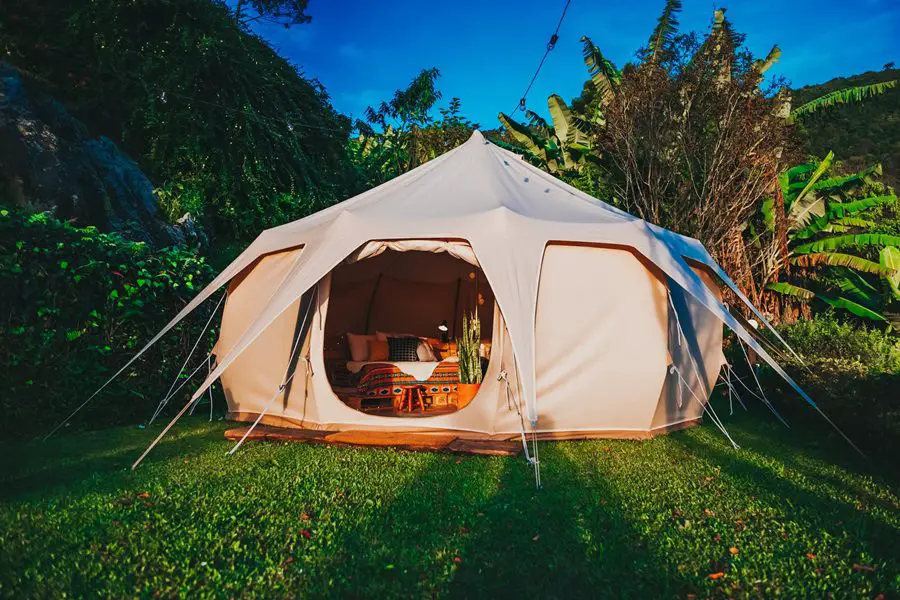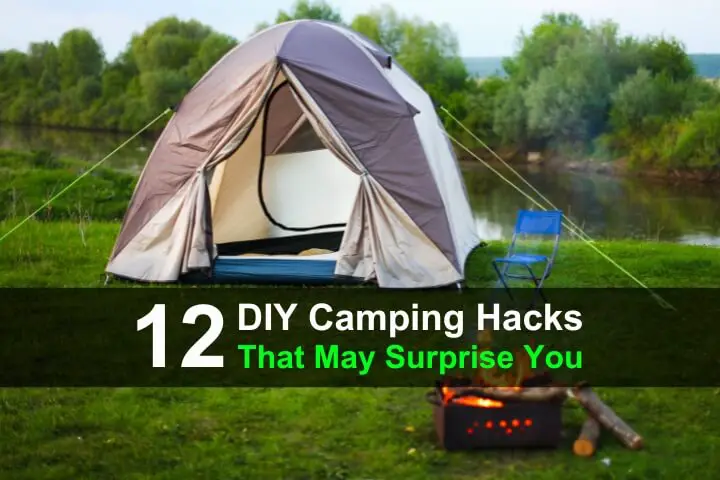SHTFPreparedness may collect a share of sales or other compensation from the links on this page.
Your shelter is massively important.
It’s the key to preventing illnesses from harsh rainstorms, getting a comfortable night’s sleep, and maintaining a hospitable environment for you to rest in during the downtime on your camping trip.
When traveling with others, it’s the only privacy you’ll have for a few days or a week. It’s time to treat it right, and we’ll show you how to do it.
6 Tent Care Tips You Should Know
1. Waterproofing Your Tent is Critical and Cheap

Waterproofing your tent is like giving a shield to your shield. After enough rainfall, your tent starts deteriorating.
Over time, you’re going to see small leaks take shape and begin compromising more areas of your tent. You can pick up an extremely inexpensive waterproofing spray to treat the outside of your tent.
To make it extra cheap, look for shoe waterproofing sprays (usually available in 8.4-ounce cans). Two may be needed depending on your tent’s surface area, but it’s cheaper than alternatives.
Waterproofing not only protects your tent for future use but also serves as a quick fix for pinhole-sized leaks. Nothing beats professional repair, but this can give you a bit of extra slack if you can’t afford maintenance right away.
2. Shake It Off Before You Store It
Part of caring for it means storing it properly. We’ll get into where you store it at home in a minute, but for now, stashing it back in your bag or truck bed requires a bit of TLC.
We find that half the time, when we shake out the tent before folding it up, we see debris, dirt, and occasionally patches of moisture that flick into the wind that we didn’t see beforehand.
Moisture is dangerous for your tent or tarp storage, which brings us to our next tip.
3. Story It Dry
Every warning label and blog mentions the importance of dry storage, but we can’t emphasize this enough.
Your objective is to eliminate the potential threat of mold and mildew growth. Mildew doesn’t necessarily damage your tarp or tent, but it can pose major health risks.
Breathing in mildew can cause asthma and worsen pre-existing lung-related conditions, and at the base of it all, you’re breathing in extremely harmful bacteria for hours upon hours while you sleep.
Mildew happens in warm, damp environments, just like mold. When it comes time, mold will eat through your tent. If you don’t store it properly and begin to develop mold (unresolved moisture that stays in your tent when you pack it), it doesn’t take long for it to spread.
It’s important to catch it before storing your tent, as it may start to develop an odor. If you go a month or more between camping trips, you could ruin a tent simply by storing it wet. There are also obvious health concerns with this.
4. Keep Boots and Tools Outside of the Tent
Even if you have high-quality bucket-style floors in your tent, keep your boots and gear outside. Do get a padlock on an ABS plastic locking chest, but don’t bring it into your tent.
Some hiking boots have cleats on the bottom for better traction when you’re rock climbing or on a steady incline, and those will shred your flooring like nothing else.
Even if it doesn’t come with cleats, it still provides unnecessary damage and abrasion that will lead to major issues down the line.
As for gear, you can bring your backpack inside the tent as long as it doesn’t contain any external storage. If your keys or a knife protrude through a side pocket, they’ll also mess up your tent’s flooring and siding.
If everything is packed internally, it’s okay to bring the bag in. If you absolutely need to bring certain things into the tent, grab a camping table and prop it up inside.
5. Patch Up When Necessary
Before you start looking for nearby shops or mail-in services, you don’t need to professionally repair every single type of tent.
If you bought an inexpensive, basic tent from a superstore, you don’t want to spend more on repairs than you do on the initial tent purchase cost.
We’re talking about 2-4 person (and higher) tents and major damages that a bit of waterproofing or patching won’t fix. When it comes to patching, you can use the following items once you get home:
- Hot Glue Gun: It takes less than a minute and seals it up pretty well. It’s even useful for repairing seams.
- Stitch Patch: You’ll have to waterproof this afterward, but take an old tarp or something that you’re not using while camping, cut a slightly oversized square out of it, and stitch it onto your tent. To prevent leaks and further damage, you can apply hot glue around the edges or waterproof, as we said.
- Purchase a Patch Kit: You can use these relatively inexpensive kits while camping to stop further damage before storing them.
6. Clean With Non-Abrasive Methods
Tents aren’t all-powerful, even when marketing materials tell us that they are.
Time and stress will wear them down, so provide a little less stress by using non-abrasive cleaning utensils, such as the soft side of a sponge or a dry microfiber rag.
Hard plastic brush bristles can easily puncture holes in your tent material, especially with a lot of back-and-forth motion on tough, stuck-on dirt.
The challenge lies in cleaning your tent while following the instructions to keep it dry. If you’re cleaning it off in the driveway at home after a long trip, hose it down and hang it up over your car like a cover.
Do this during a sunny day, and you’ll use a bit of natural light to help speed up the drying process. Just be sure to check all the corners for moisture before storing it until next time.
Your Tent Care Is a Top Priority
You need to maintain your tent. We know that much, but starting out with a lower-maintenance tent in the first place is a wonderful way to kick off the camping season properly.
It’s your shelter from rain, insects, and the uncertain darkness of the forest. Treat it well, and it will do the same for you.

















